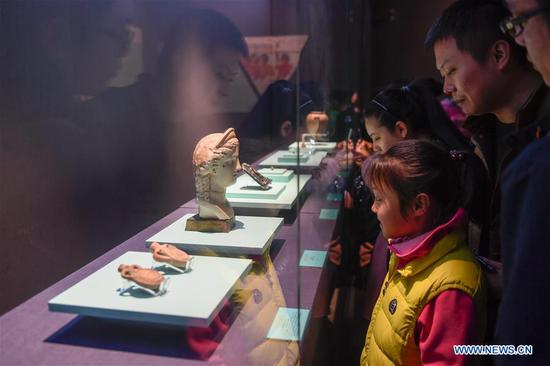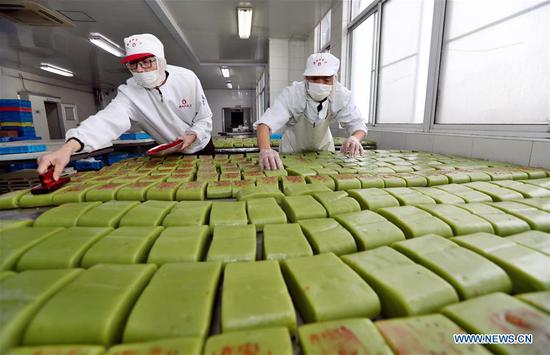But fluctuations to remain amid slower global growth forecasts and trade tensions
The Chinese yuan, or renminbi, strengthened to a six-month high against the United States dollar on Thursday, as the US Federal Reserve expressed its patience on future rate increases, and the market awaited signals from ongoing Sino-US trade talks in Washington.
The People's Bank of China, the central bank, announced the renminbi's daily reference rate at 6.7025 per dollar on Thursday morning. It was the strongest level since July 19, 2018.
The currency has rebounded 2.5 percent against the US dollar over January, on track for its strongest month in a year.
Global investors' attention was directed toward the US Fed's meeting, which left interest rates unchanged and concluded just few hours earlier than the PBOC's announcement.
A statement from the US Federal Open Market Committee removed any reference to "further gradual increases" in the federal funds target rate from its official statement, emphasizing it plans to be "patient" about future increases in view of "muted" inflation.
Following the Fed's announcement, the dollar weakened against most currencies and the gold price jumped to its highest level in eight months.
The renminbi exchange rate against the dollar could climb to 6.72 in the near term if the dollar continues to weaken, forecast Lukman Otunuga, a research analyst at FXTM, an international foreign exchange platform.
"The Chinese currency is likely to remain influenced by geopolitical risk factors, the dollar's performance and global sentiment," said Otunuga. "Although the dollar continues to benefit from safe-haven flows, buying sentiment is seen to be taking a hit if the Fed sounds more dovish than expected."
The relaxation of the Fed's policy on rate increases has been considered a move to show flexibility in view of recent market volatility, indications of a global economic slowdown and any lingering effects of the partial government shutdown.
"The Fed is taking more of a wait-and-see approach," said Justin Lederer, a treasury analyst at Cantor Fitzgerald in New York. "It doesn't have a ton of data given the government shutdown. The economy is slowing, and the Fed won't continue on its path of gradual rate hikes."
Uncertainties are mounting for investors as no clear information was released from the closed-door trade talks between leaders from China and the US.
Concerns related to trade frictions and slowing global growth are also denting appetite for high-risk financial products, according to experts.
China has joined some other major economies in accelerating gold purchases in the past year, a move to hedge against risks of currency and equity fluctuations. By the end of December, the gold reserve in China rose to 1,852.52 metric tons, the first increase since November 2016, according to data from the PBOC.
In the face of economic headwinds and rising global trade tensions, China is continuing to diversify its foreign exchange reserve and purchased more gold to prevent financial risks, a trend that might continue in the coming months, said Song Xin, chairman of the China Gold Association.
The World Gold Council released a report on Thursday, saying central banks around the world purchased a net $27 billion of gold, or 651.5 tons, an increase of 74 percent year-on-year.
Russia led the buying and its net purchases were the highest on record.
Scott Reeves in New York contributed to the story.


















































